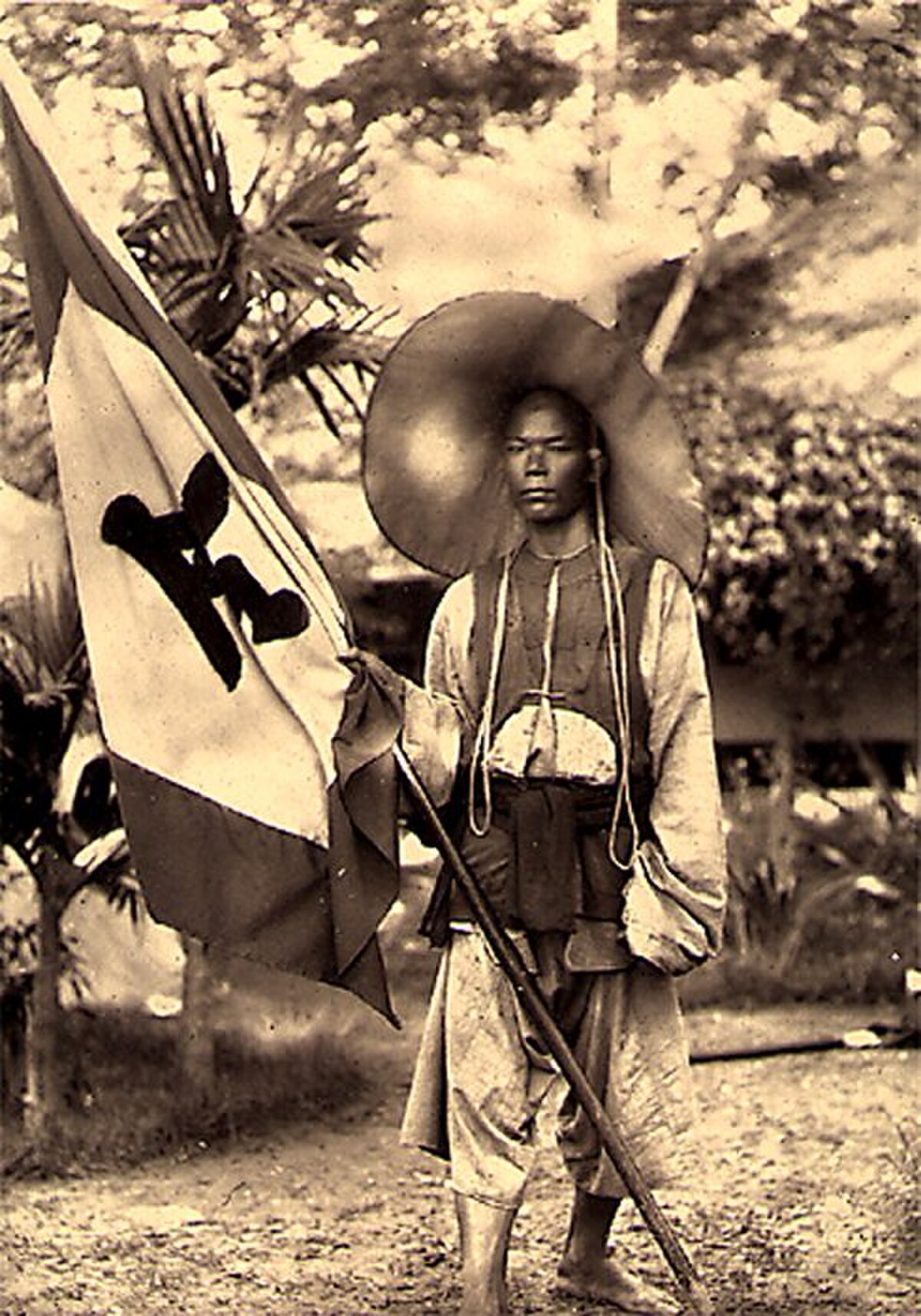
Haw Wars
LaosIn the 1840s sporadic rebellions, slave raids, and movement of refugees throughout the areas that would become modern Laos left whole regions politically and militarily weak. In China the Qing Dynasty was pushing south to incorporate hill peoples into the central administration, at first floods of refugees and later bands of rebels from the Taiping Rebellion pushed into Lao lands. The rebel groups became known by their banners and included the Yellow (or Striped) Flags, Red Flags and the Black Flags. The bandit groups rampaged throughout the countryside, with little response from Siam.
During the early and mid-nineteenth century the first Lao Sung including the Hmong, Mien, Yao and other Sino-Tibetan groups began settling in the higher elevations of Phongsali province and northeast Laos. The influx of immigration was facilitated by the same political weakness which had given shelter to the Haw bandits and left large depopulated areas throughout Laos.
By the 1860s the first French explorers were pushing north charting the path of the Mekong River, with hope of a navigable waterway to southern China. Among the early French explorers was an expedition led by Francis Garnier, who was killed during an expedition by Haw rebels in Tonkin. The French would increasingly conduct military campaigns against the Haw in both Laos and Vietnam (Tonkin) until the 1880s.[47]
